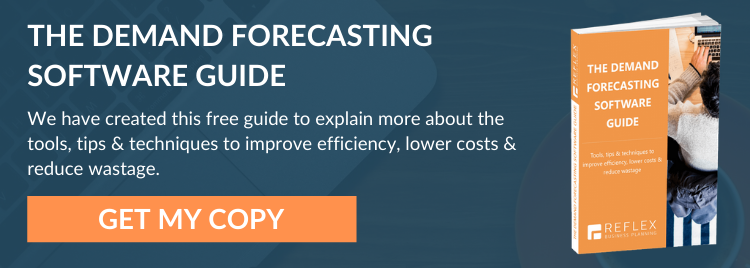Accurate demand planning can unlock greater efficiency, achieve significant cost savings, and stimulate a more responsive approach to growth opportunities. However, the complexity of omnichannel sales and global supply chains can make demand forecasting challenging. With the difficulty of getting demand planning right, what steps can you take to improve your approach?
1. Organise Your Data.
Effective demand planning requires ample volumes of data, but it isn’t just historical sales information that can improve the accuracy of your forecasts. Data should be mined from a wealth of sources, internal and external, including purchase orders, market intelligence, promotional information, loyalty card schemes, and consumer trends – in fact, any sources that provide you with an insight into consumers’ thinking and behaviour.
When combined with real-time visibility of inventory and supply chain constraints, data lets you implement actions and improvements that inject agility into your process modelling, thereby improving your responsiveness to emerging growth opportunities.
2. Use A Unified Forecasting Software Platform.
If spreadsheets or outdated IT systems are the basis for your demand planning, it’s time to implement a unified forecasting platform. At Reflex Planning, our demand forecasting software uses cutting-edge forecasting techniques to help you to make informed decisions, reducing your costs while improving value for your customers.
- Transfer order history from your Enterprise Resource Planning (ERP) platform.
- Calculate forecasts daily, weekly, or monthly using auto-adaptive calculations.
- Analyse demand or sales history to generate trends for seasonal variations.
- Create profiles to learn from past events, thereby improving forecast accuracy.
- Easily compare products, customers, and markets to provide detailed information about the impact of sales activities on sales and margins.
3. Adopt A Holistic Approach.
Demand planning should never be conducted in isolation. A retrospective look at previous sales data to predict upcoming demand is less likely to generate success than a holistic approach that assimilates information and assumptions from many sources.
Demand planners must consider the overall performance of the business, so they are readied for any unexpected change in circumstances. This helps avoid overordering the wrong inventory or underordering the right inventory. Awareness of forthcoming social media campaigns, for example, is crucial to ensure that the supply chain is primed to deliver products or raw materials to meet anticipated demand.
4. Learn From Your Mistakes.
Historical order data is a valuable source of information, but it may contain errors made in previous demand forecasts. For example, an inability to supply a customer with the required volume of products may have resulted in the order being fulfilled in two or more shipments: relying on this data would lead to an incorrect demand forecast in future as it did not represent your customer’s actual requirements at the time.
Find Out More About Our Demand Forecasting Software
If you’re committed to improving your business’s efficiency and resource management to become more responsive to the changing demands of the marketplace, get in touch to arrange a free demonstration of our demand forecasting software.

